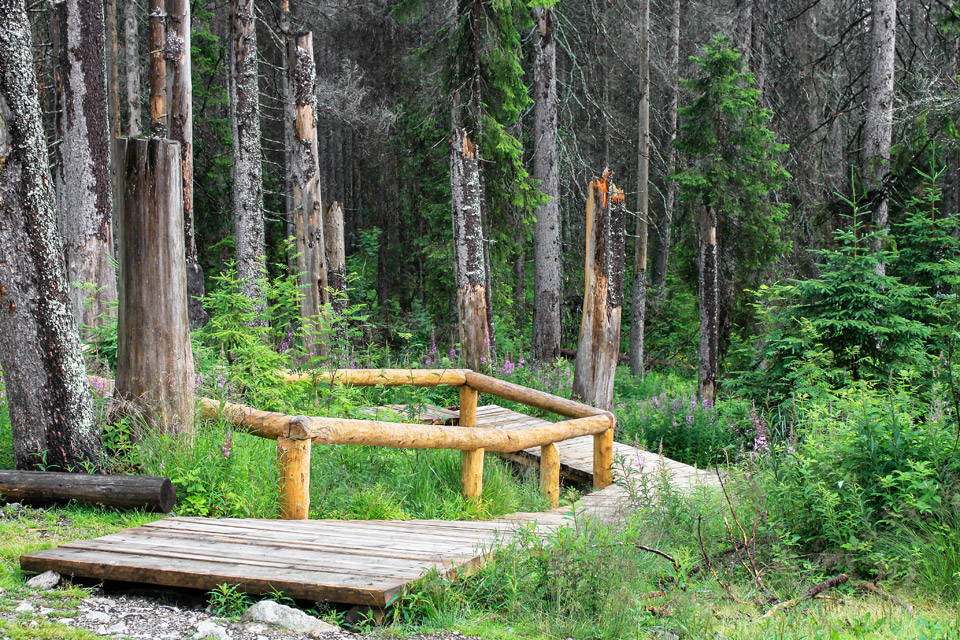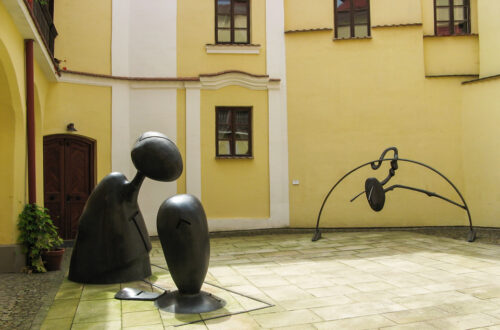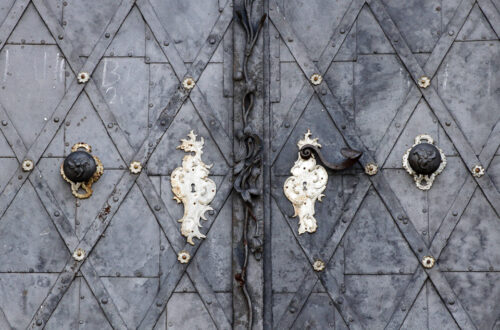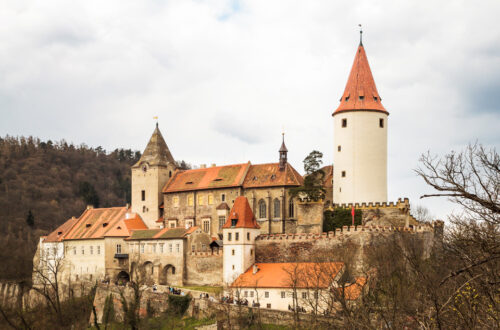Springs of Vltava river
Vltava is the longest river of the Czech Republic, its length is 433 km. On its way it flows also through Prague, the capital of the Czech Republic. Bedřich Smetana, the Czech composer who lived from 1824 to 1884, was inspired by the river so much that he included it in his cycle of six symphonic poems “My Country”. I love the piece. It’s playful music and one can really hear the flow of a river in its tunes.
Vltava rises in Šumava and we decided to visit its spring during our last stay there. In spite of a rainy morning we set off early, got on a bus and went to the starting point of our trip. We hoped that the rain would stop but it became even heavier and we started our trip covered in raincoats, the lower parts of our trousers soaked in a while. To make it worse, storm started. Our children got really grumpy and I was wondering whether we shouldn’t have stayed in the camp. But we just went further and further, following the marked trail and it lead us to scenery I enjoyed and found interesting.
You find yourself in the area where no maintenance is allowed and dry trees must not be cut down. Once you enter the forest you may be in real danger of being harmed by a falling tree, especially if wind blows.


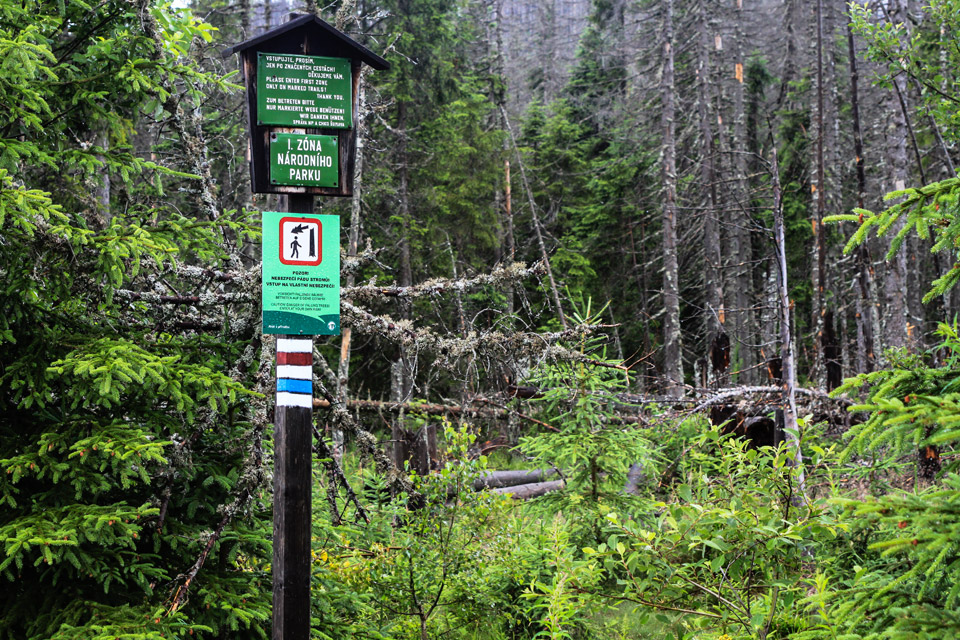
The notices above read:
First zone of the national park
Please enter first zone only on marked trails. Thank you.
Caution! Danger of falling trees! Enter at your own risk!
An exception was made regarding the dry trees which were too close to the trail. They were cut down so that coming tourists were not exposed to danger but the cutting down was performed at the height of approximately 3 metres and in a special way. The used method was expensive and slow but efficiently simulated a windfall.
As soon as we came near to the spring, our mobiles announced us that we were going to use a German network. It made us realise how close the the German border we were. From 1949 to 1989 this area was closed because of its proximity to the border.
The place you see above shows where the spring of the Vltava river is situated. But only at first sight. If you read the information boards displayed there you get to know that Vltava rises in several spots around and there is no certainty which spot represents the real spring. In the place above you can see just a symbolic spring bringing water from natural springs by a few hundred long wooden pipe.

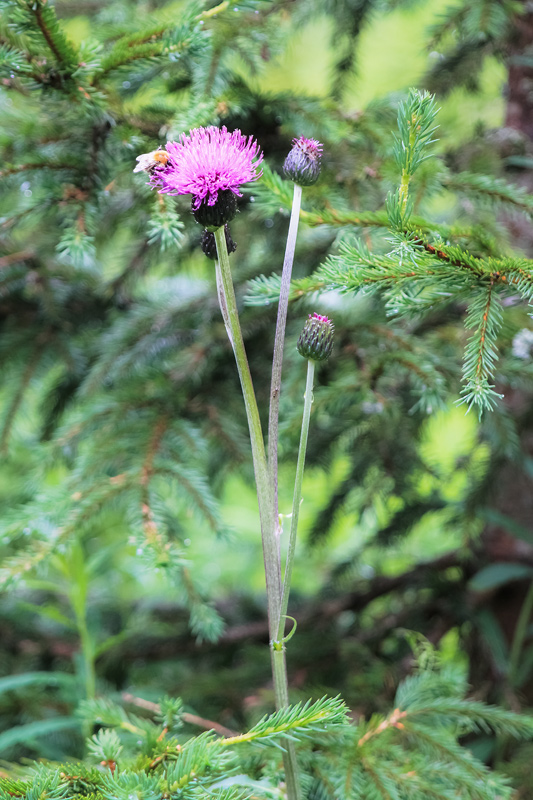
The wooden lady above was carved in 2004. There is tradition here to unlock rivers in spring before paddling season starts and although you can’t see it in the photo, there was an unlocked padlock hanging above the statue’s head.
In July 2010 a path built on wooden piles was open for public to access one of the natural springs situated in a hard to access place, nevertheless after just a couple of years the path was closed because of imminent danger of falling trees. It is interesting that water from this spring is rich in silver, supposedly because the water flows through a medieval silver mine.

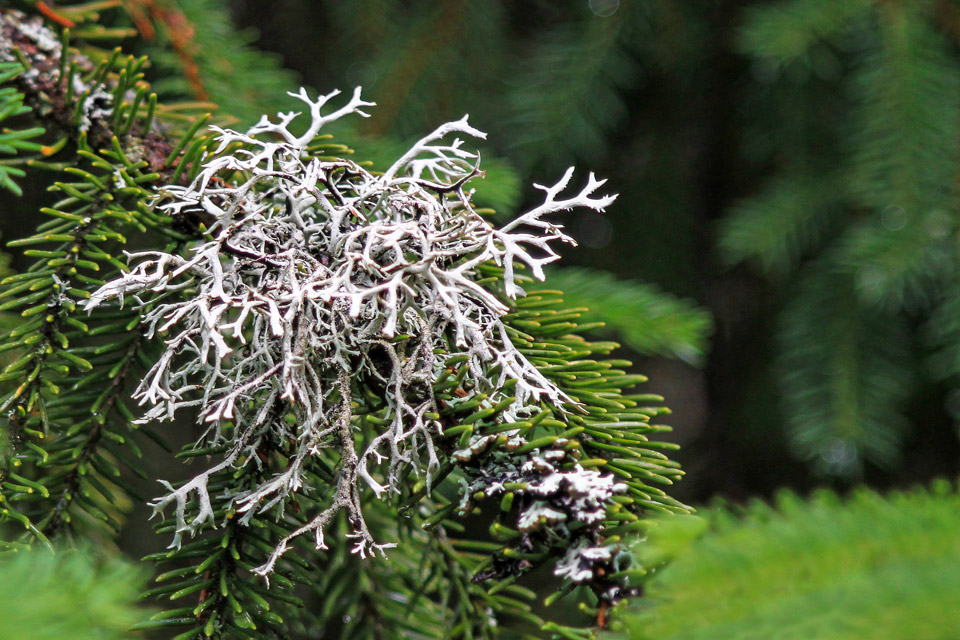
Vltava springs belong to the most visited areas of Šumava, five hundred thousand tourists are said to come every year. We were quite lucky to have met just a few people, undoubtedly because of the unfavourable weather. The rain made up in the end for the inconvenience it had caused.



